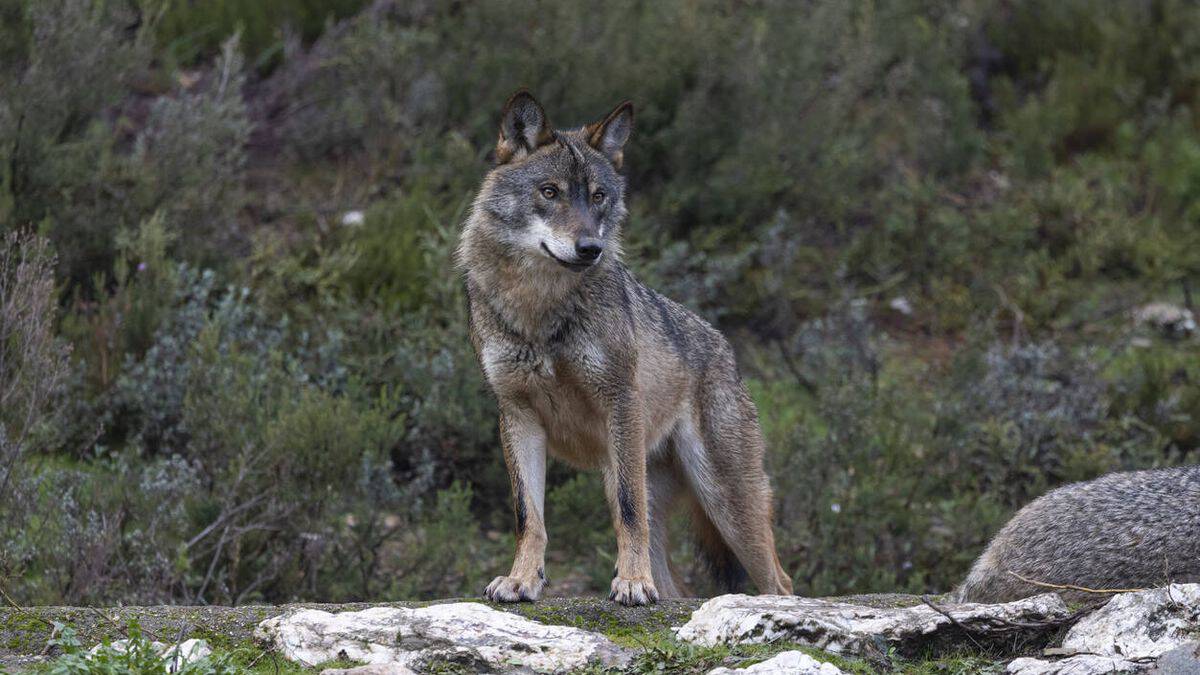Although the sighting occurred last winter, it is only now becoming public. In a surprising development, the wolf was captured for the first time in the vicinity of Barcelona in the Parc de la Serralada de Marina, located in Santa Coloma de Gramanet.
According to the information provided, the specimen was detected by park workers in March 2022 and was a “one-time sighting” captured through security cameras.
In fact, the wolf now appears in the records used for the study of mammals in Catalonia.
Thanks to the photo-trapping cameras that are still installed in the Serralada de Marina, it was possible to capture for the first time the wolf right in the metropolitan area of the Catalan capital.
The authorities emphasize that it is not that there is a wolf present in Barcelona; it was by chance that they saw it, but surely the animal passes through many places that cannot be detected.
Despite this unusual presence, experts emphasize that the wolf does not pose a significant threat to the local population and is extremely unlikely to attack people.
Wolves in the vicinity of Barcelona: An Extraordinary Encounter with Wildlife
Barcelona, Spain’s vibrant coastal city, is widely known for its captivating architecture, lively culture and stunning beaches. However, few know that beyond the bustling urban landscape lies a natural paradise where it is possible to have an unexpected encounter with a magnificent creature: the wolf. Join us as we discover the captivating allure of the wild nature surrounding Barcelona and its mysterious lupine inhabitants.
The Enchanting Nature Surrounding Barcelona
Although Barcelona is associated with its cosmopolitan charm, its geographical location allows for a fascinating coexistence between urban life and untamed nature. Located between the picturesque Mediterranean Sea and the rugged mountains of the Pyrenees, this region offers a diverse landscape that encompasses impressive mountains, lush forests and tranquil rivers.
Renowned for its ecological diversity and rich biodiversity, the nature surrounding Barcelona provides refuge to numerous wildlife species, including the remarkable Iberian wolf (Canis lupus signatus), a subspecies of the gray wolf.
The Iberian Wolf: Exceptional Beauty and Adaptability
The Iberian wolf, a distinct subspecies endemic to the Iberian Peninsula, has captivated researchers and nature enthusiasts alike. Recognized for its exceptional beauty, the Iberian wolf has a reddish or tawny coat, generally adorned with darker shades on its back and dorsal area. Its striking appearance is combined with a rather slender build, which sets it apart from its larger northern relatives.
These majestic creatures are known for their remarkable adaptability, allowing them to thrive in diverse habitats, from densely forested areas to rocky mountainous terrain. Over the years, the wolf population in the region has experienced a gradual increase, thanks to conservation efforts and the preservation of their natural habitats.
Barcelona’s Wild Nature: An Iberian Wolf Refuge
The nature surrounding Barcelona offers a unique opportunity for wildlife enthusiasts and nature lovers to witness a rare glimpse of the elusive Iberian wolf. Several protected areas and nature reserves in the vicinity of the city provide natural habitats for these amazing creatures.
The
Montseny Natural Park,
located just 50 kilometers northeast of Barcelona, is one of those refuges known for its lush forests and natural beauty. The park is home to a wide variety of wildlife, including the Iberian wolf. Here, visitors have the opportunity to witness the natural behavior of wolves and observe their interactions within their social hierarchy.
Six whales, including a calf, sighted off the coast of Barcelona
Another charming destination is the Garraf Natural Park, a short drive southwest of Barcelona. This coastal park boasts breathtaking scenery, from rocky cliffs to sandy beaches, and is an exceptional place to observe not only wolves, but also a multitude of other native species that call this region home.
Conservation and Coexistence Efforts
Preserving the delicate ecological balance and promoting coexistence between humans and wildlife is essential when encountering these magnificent creatures. Barcelona and its surrounding regions pride themselves on their comprehensive conservation programs, which aim to protect and maintain the habitats that support the Iberian wolf population.
Education and public awareness play an integral role in these efforts to ensure the future survival of the Iberian wolf. Local initiatives offer guided tours and educational programs focused on wildlife conservation, providing visitors with invaluable insights into the lives of these amazing creatures.
A Unique and Unforgettable Experience
Encountering a wild wolf on the outskirts of Barcelona is a truly unique and impressive experience. It offers the opportunity to connect with nature, appreciate the wonders of the natural world and gain a deeper understanding of the importance of wildlife conservation.
Visitors to Barcelona are encouraged to venture beyond the bustling city streets and explore the enchanting nature just beyond. With its rich biodiversity and the presence of the captivating Iberian wolf, this region offers a remarkable adventure that will leave a lasting impression on all who embark on it.
Will more specimens be sighted this year?
Faced with the possibility of an increased presence of wolves in Catalonia, the Department of Climate Action has established a working group.
This group is composed of representatives of the livestock sector, experts and environmental advocates and its objective is to anticipate and manage possible conflicts associated with the presence of the wolf, as well as to minimize social conflicts that may arise from an increase in the wolf population in the region.
The sighting of a wolf in the vicinity of Barcelona has aroused great interest and generated discussions about the coexistence between wildlife and the local population.
Although the presence of wolves is rare in the region, what happened should be taken into account.

